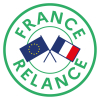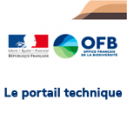Mission Cap Corse

From the 1st to the 20th July, the 6th Gombessa expedition led by Laurent Ballesta was in the Cap Corse and Agriate Marine Natural Park to investigate strange circular formations observed at a depth of over 100 metres.
In 2011, during a sonar campaign off Cap Corse by the French Research Institute for the Exploitation of Marine Resources (IFREMER) and the University of Corte, some thousand perfectly round rings on the seabed appeared on the monitoring screens. With a diameter of up to 30 metres, these coralligenous rings form true natural monuments that harbour unique biodiversity.
To understand how and when these ecosystems appeared, four professional divers, assisted by a 45-person surface team, explored the depths to the north of the Cap Corse and Agriate Marine Natural Park in July 2021.
In order to reach the atolls located between 115 and 140 metres deep, the four marine biologist divers used a technique developed in 2019, successfully combining the equipment of saturation diving initially dedicated to offshore operations, with the techniques of autonomous scuba diving. They lived together in a 5m² module pressurised to 13 bars, i.e., the equivalent of -120 m, for 20 days to carry out unlimited underwater excursions in the twilight zone between 60 and 120 metres below the surface. They were thus able to explore the seabed, identify the species present, and film and photograph the coralligenous atolls over long periods of time while avoiding the decompression stops that are compulsory during traditional diving.
They also carried out several samplings that will make it possible to determine the age of the rocks on which the coralligenous formations have developed.
In addition to acquiring knowledge, this mission will also make it possible to identify the potential impacts generated by human activities and to plan for the implementation of appropriate management measures. Large ships are likely to anchor near these areas and degrade these unique and still unfamiliar ecosystems.
The French Biodiversity Agency supports the Gombessa 6 Expedition as part of the Plan France Relance
[ youtube video : https://www.youtube.com/watch?v=-4ZWO4HW42s&t=2s ]





